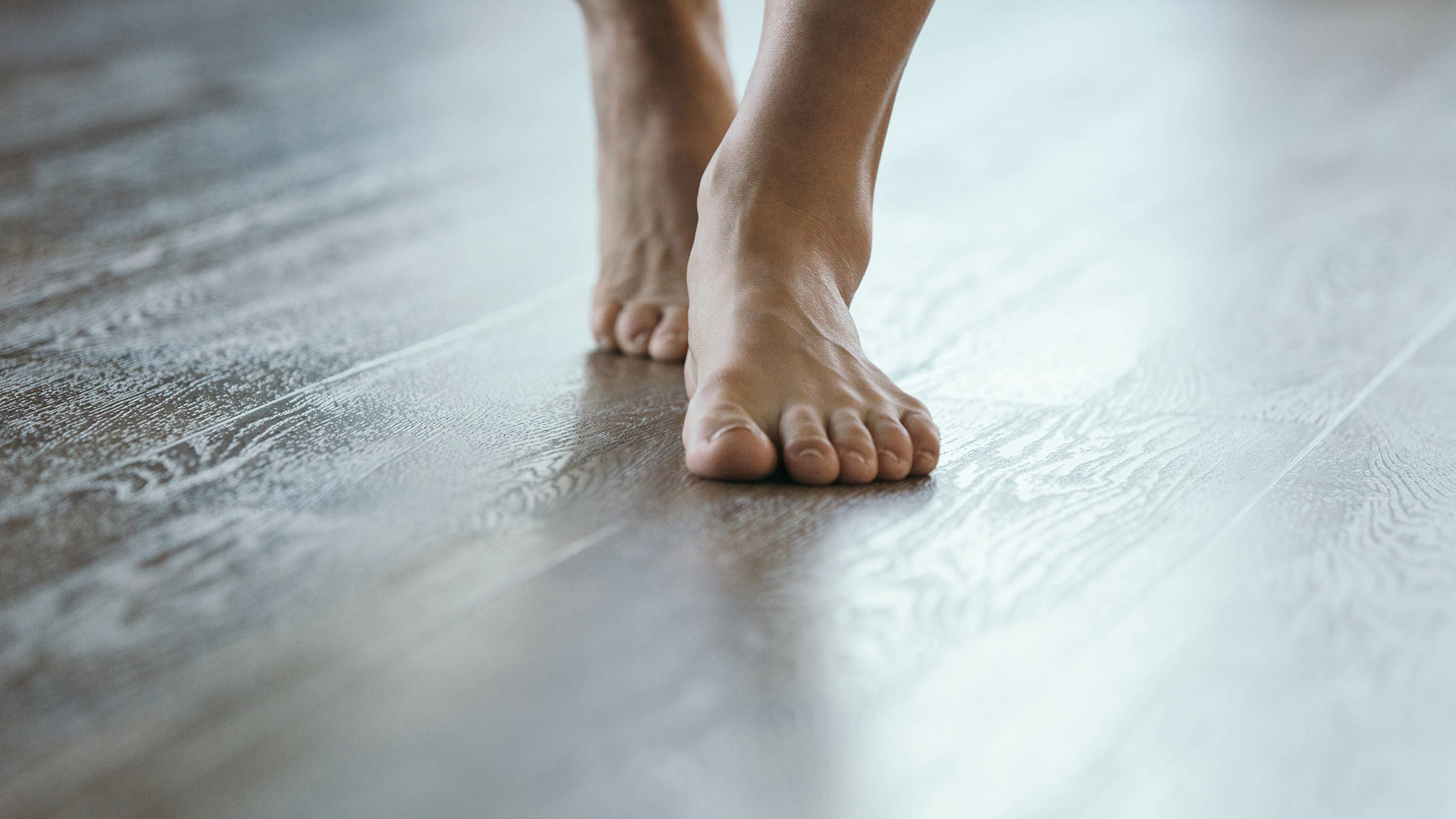Installing the right subfloor system is a critical part of transforming a basement into a functional living space. Two popular options homeowners consider are Dricore® and DryBarrier®.
Both systems offer unique features to protect against moisture and provide a comfortable foundation for finished flooring. This article will compare Dricore® and DryBarrier®, delving into their key characteristics, installation processes, and overall performance to help homeowners make an informed decision for their basement renovation projects.
Understanding Basement Subfloor Systems
Basement subfloor systems are essential components in creating a dry, warm, and comfortable living space below grade. They serve multiple purposes, including protection against moisture, insulation, and providing a stable base for finished flooring.
Basements are prone to moisture infiltration because they’re underground. Concrete floors can allow water vapor to seep through, leading to dampness, mold growth, and damage to flooring materials. A proper subfloor system creates a barrier between the concrete and the finished floor, preventing moisture-related problems and making the space more comfortable.
Homeowners can face multiple challenges when finishing their basement floors:
- Moisture and humidity control
- Temperature regulation
- Limited floor height
- Uneven concrete surfaces
- Potential for mold or mildew
Specialized subfloor systems such as Dricore® and DryBarrier® help homeowners overcome these challenges, providing a foundation for a dry, warm, and comfortable basement living area.
All About Dricore®
Dricore® is a well-known name in the basement subfloor market, offering an all-in-one moisture protection and insulation solution. It’s also easy to install. Its key features include:
- Air Gap Technology: Raised channels beneath the panels allow for air circulation and moisture evaporation.
- High-density polyethylene membrane: Acts as a moisture barrier to protect against water vapor
- Engineered wood top layer: Provides a stable surface for finished flooring
- Thermal break: Offers insulation with an R-value of 2.7
Dricore®‘s user-friendly installation process is also a big selling point:
- Acclimate panels to the basement environment for 24 hours.
- Clean and level the concrete floor surface.
- Leave a ¼-inch to 1-inch gap around the room’s perimeter, depending on the application.
- Lay panels in a staggered pattern, connecting them with the tongue-and-groove system.
- Cut panels as needed to fit around obstacles using basic tools like a circular saw.
The entire installation can typically be completed in a single day, depending on the basement’s size and layout.
All About DryBarrier®
DryBarrier®, manufactured by DuraDrive Systems International, is another popular subfloor option designed specifically for basements. DryBarrier® subfloor panels offer these advantages:
- Thermoplastic elastomer construction: Resistant to mold and mildew
- Air-flow technology: Raised design allows for air circulation beneath the panels
- Thermal break: Provides additional warmth to the finished floor
- Water-flow channels: Directs any moisture away from the living space
- High weight capacity: Can support up to 11,500 pounds per square foot
Like Dricore®, DryBarrier® has a relatively easy installation process:
- Ensure the concrete floor is clean and level.
- Begin installation in a corner, leaving a small expansion gap around the perimeter.
- Connect panels using the tongue-and-groove system.
- Cut panels as needed to fit the room’s dimensions and obstacles.
- Install finished flooring directly over the DryBarrier® panels.
According to DryBarrier®, you can complete the installation in three to five hours for most basements.
Side-By-Side Comparison
Let’s compare Dricore® and DryBarrier® across several key factors.
Both Dricore® and DryBarrier® are engineered for long-term performance in basement environments. Dricore®‘s engineered wood construction provides a sturdy base, while DryBarrier®‘s thermoplastic elastomer material offers excellent resistance to moisture and mold. Both systems are designed to withstand common basement floor problems and protect finished flooring for years.
Moisture control is critical in basement subflooring. Dricore® uses its Air Gap Technology and polyethylene membrane to prevent moisture accumulation. DryBarrier® achieves similar results with its raised panel design and water-flow channels. Both systems effectively create a barrier between the concrete floor and the living space, reducing the risk of moisture-related problems.
When it comes to thermal performance, both systems offer benefits. Dricore® Subfloor R+ provides an R-value of 2.7, adding an extra layer of insulation to the basement floor. In contrast, DryBarrier®‘s thermal break technology claims to add 3°C of increased warmth to the finished floor. Both options provide a more comfortable basement environment by reducing cold transfer from the concrete slab.
Dricore® panels are larger, which may mean fewer pieces to install, but could be more challenging to maneuver in tight spaces. DryBarrier®‘s panels are smaller and potentially easier to handle, especially in basements with irregular shapes or numerous obstacles.
Both systems use tongue-and-groove connections and can be cut with basic tools, making DIY installation accessible for most homeowners with basic skills.
Dricore® offers a 25-year limited warranty on its subfloor panels. DryBarrier provides a 30-year limited warranty.
Choosing the Right Subfloor for Your Basement
When deciding on the best subfloor, you’ll need to take your budget into account along with these critical factors:
Moisture protection: Your basement’s moisture levels play a crucial role in determining which subfloor is best. Damper basements might benefit more from a system like DryBarrier®, which has advanced water-flow channels.
Insulation needs: For basements in colder climates, the insulation properties of Dricore® provide an added layer of warmth, boosting comfort levels and energy efficiency.
DIY skill level: Whether you’re willing and able to tackle the installation yourself should also influence your choice. Experienced DIYers might lean toward Dricore® due to its larger panels and straightforward installation. DryBarrier®’s smaller panels are a more manageable option for beginners or those with tricky basement layouts.
Use of the space: How you plan to use the basement—whether as a living area, recreation room, or storage space—should help guide your decision, as different uses call for different subfloor characteristics. Think about available headroom, as some flooring options can significantly reduce ceiling height.
Finally, if you’re not sure which system would best suit your situation, consult a professional.









